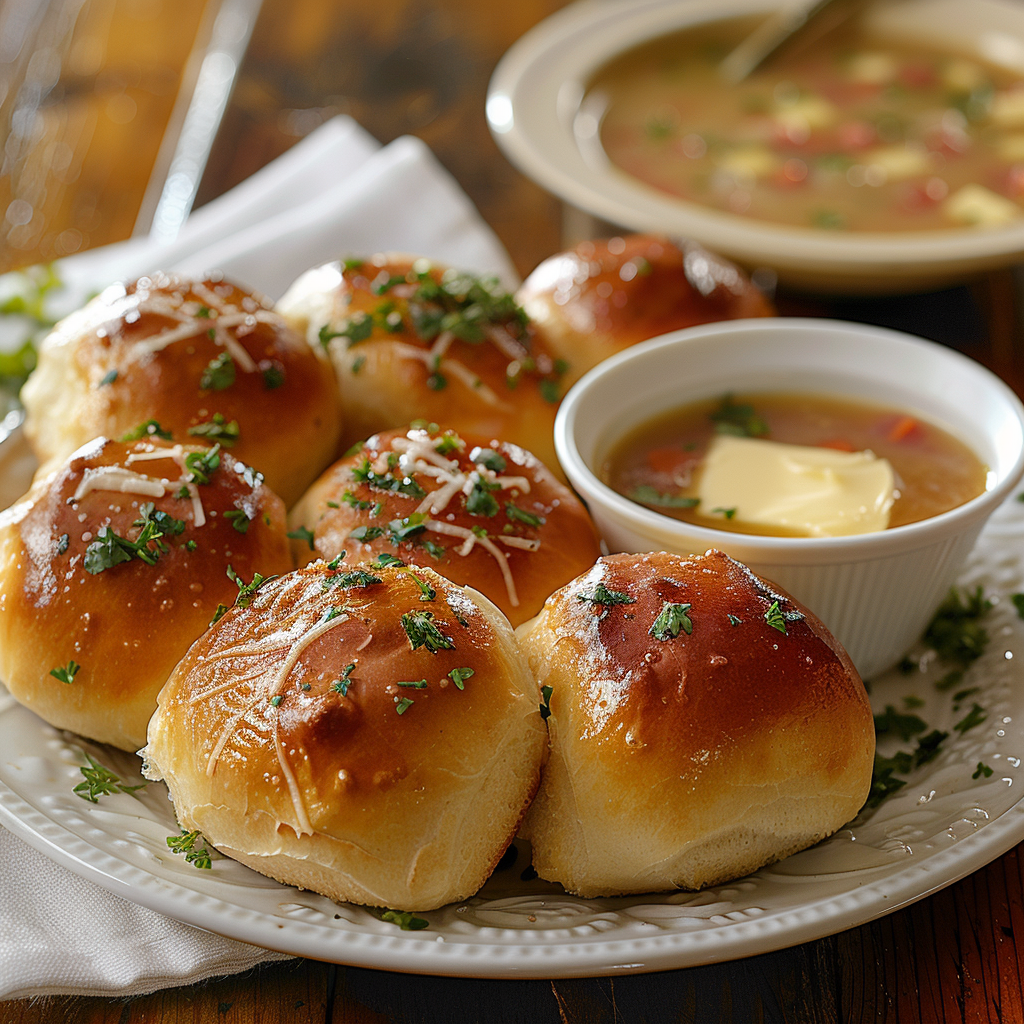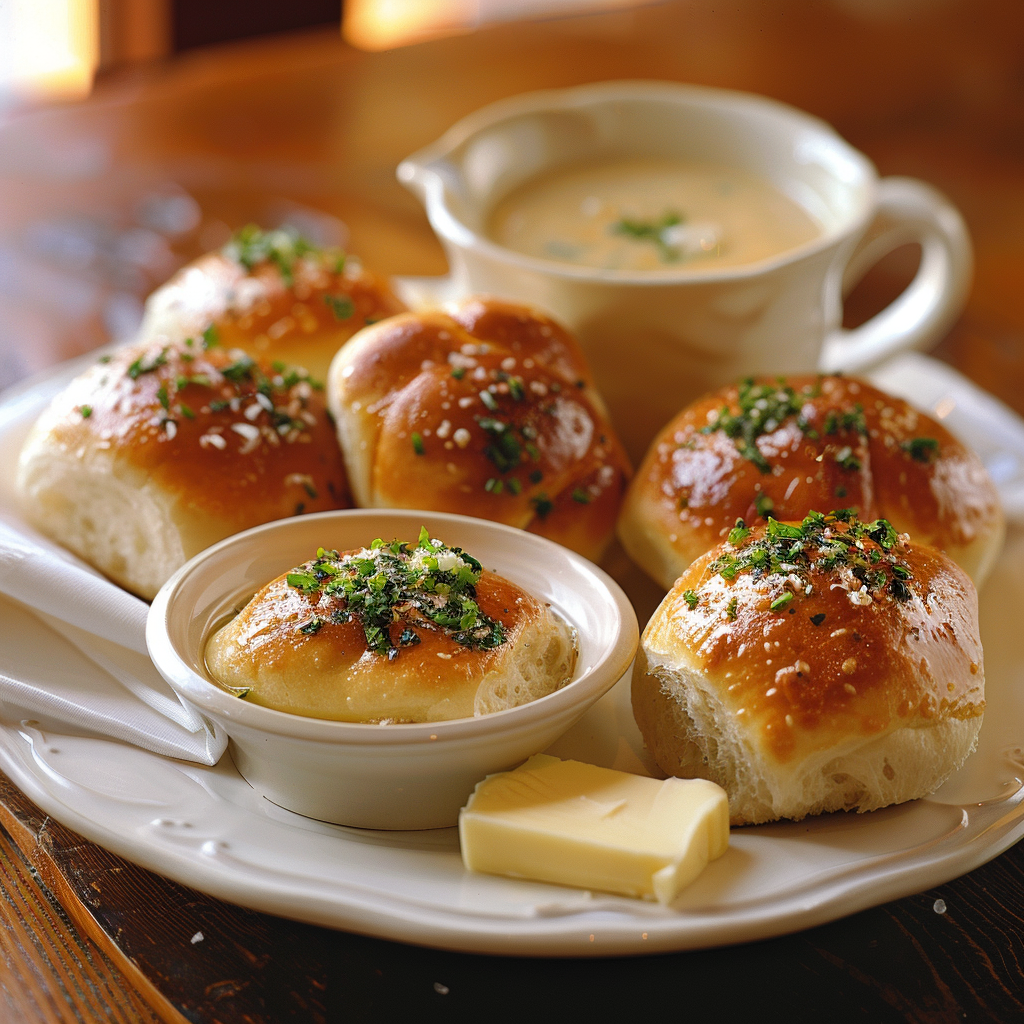
Why These Soft Dinner Rolls Are a Game-Changer
There’s something magical about pulling a tray of warm, golden Soft Dinner Rolls out of the oven. The smell alone is enough to make anyone drop what they’re doing and head straight to the kitchen. I remember the first time I made these for my family. My youngest nephew, who usually turns his nose up at bread, couldn’t stop grabbing roll after roll. “Auntie, these are AMAZING!” he said with crumbs all over his face. That’s when I knew this recipe was special. Whether you’re craving fluffy dinner rolls or a sweet soft bun, this recipe has your back.
A Little History About Soft Dinner Rolls
Bread has been a staple in kitchens for centuries, but Soft Dinner Rolls have a unique charm that bridges tradition and modernity. They remind me of those pillowy Japanese soft bread buns I once had at a bakery in New York. So soft, so light—it felt like biting into a cloud. This recipe draws inspiration from those delicate textures while keeping things simple for home cooks. No fancy equipment or exotic ingredients needed—just good old-fashioned love and patience.
Why You’ll Love This Recipe
These super soft dinner rolls are perfect for anyone who loves baking (or eating). They’re beginner-friendly, forgiving if you mess up a little, and oh-so-rewarding. Plus, they’re incredibly versatile. Serve them plain as fluffy dinner rolls, slather them with butter, or turn them into mini sandwiches. And let’s not forget how amazing they smell while baking—your house will feel like the coziest bakery on earth.
Perfect Occasions to Whip Up These Rolls
Whether it’s Thanksgiving, Christmas, or just a random Tuesday night, these best dinner roll recipe creations fit any occasion. They’re a hit at potlucks, holiday dinners, or even lazy Sunday breakfasts. Once, I brought these to a friend’s birthday party instead of cake, and guess what? Everyone raved about them more than dessert!
Ingredients
- 4 cups all-purpose flour
- 1/4 cup granulated sugar
- 1 packet (2 1/4 teaspoons) active dry yeast
- 1 cup whole milk, warmed
- 1/4 cup unsalted butter, melted
- 2 large eggs
- 1 teaspoon salt

Substitution Options
- For a dairy-free version, swap the milk with almond or oat milk and use vegan butter.
- If you don’t have yeast, try making no yeast no mayo dinner rolls by using self-rising flour and baking powder.
- Eggs can be replaced with flaxseed meal mixed with water for an egg-free option.
Preparation Section
Step 1: Activate the Yeast
Pour the warm milk into a bowl and sprinkle the yeast over it. Add a pinch of sugar to give the yeast a little pep talk. Let it sit for about 5-10 minutes until it gets frothy. If it doesn’t foam, your yeast might be past its prime—check the expiration date before starting again. Pro tip: Use a thermometer to ensure the milk is around 110°F; too hot, and you’ll kill the yeast.
Step 2: Mix the Dough
In a large mixing bowl, combine the flour, sugar, and salt. Make a well in the center and pour in the activated yeast mixture, melted butter, and eggs. Stir everything together until a sticky dough forms. Don’t worry if it looks messy—this is where the magic begins. Chef’s tip: Kneading by hand gives you a better feel for the dough’s texture compared to using a stand mixer.
Step 3: Knead and Rise
Turn the dough onto a lightly floured surface and knead for 8-10 minutes until smooth and elastic. Think of it as a stress-relieving workout! Place the dough in a greased bowl, cover it with a clean towel, and let it rise in a warm spot for about an hour. It should double in size, looking puffy and proud.
Step 4: Shape the Rolls
Punch down the risen dough to release any air bubbles. Divide it into equal portions and shape each piece into a ball. Arrange them snugly in a greased baking pan. Pro tip: Use a kitchen scale to divide the dough evenly for perfectly sized rolls.
Step 5: Second Rise and Bake
Cover the shaped rolls and let them rise again for 30-45 minutes. Preheat your oven to 375°F while they’re rising. Bake the rolls for 15-20 minutes until golden brown. As soon as they come out of the oven, brush them with a little melted butter for extra shine and flavor.
Timing
- Prep Time: 20 minutes
- Cooking Time: 15-20 minutes
- Resting Time: 1 hour 30 minutes
- Total Time: Approximately 2 hours 15 minutes
Chef’s Secret
To achieve that signature softness, add a tablespoon of potato starch or mashed potatoes to the dough. This trick works wonders for creating ultra-soft textures, much like Paul Hollywood’s famous soft bread roll recipe.
Extra Info
Did you know that yeast feeds on sugar to produce carbon dioxide, which makes bread rise? That’s why adding a touch of sweetness helps create those dreamy, airy pockets inside your rolls.
Necessary Equipment
- Large mixing bowl
- Measuring cups and spoons
- Kitchen towel
- Baking pan
- Parchment paper or nonstick spray
Storage
To keep your Soft Dinner Rolls fresh, store them in an airtight container at room temperature for up to two days. For longer storage, wrap them tightly in plastic wrap and freeze for up to three months. When reheating, pop them in the oven at 350°F for 5-10 minutes to restore their softness.
If you live in a humid climate, avoid leaving the rolls uncovered, as moisture can make them soggy. Instead, place a slice of bread inside the container to absorb excess moisture.
Never refrigerate bread—it speeds up staling. Trust me, I learned this the hard way after finding rock-hard rolls one unfortunate morning.
Tips and Advice
Always measure your flour correctly by spooning it into the measuring cup and leveling it off. Too much flour can lead to dense rolls. Also, resist the urge to open the oven door during baking; sudden temperature changes can cause the rolls to collapse.

Presentation Tips
- Serve the rolls warm with a pat of butter melting on top.
- Garnish with fresh herbs like parsley or thyme for a pop of color.
- Arrange them on a wooden board for a rustic look.
Healthier Alternative Recipes
Here are six ways to tweak this recipe for healthier options:
- Whole Wheat Rolls: Substitute half of the all-purpose flour with whole wheat flour for added fiber.
- Honey Sweetened Rolls: Replace granulated sugar with honey for natural sweetness.
- Vegan Rolls: Use plant-based milk and butter for a cruelty-free version.
- Herb Infused Rolls: Add dried rosemary or garlic powder for savory flair.
- Low-Sugar Rolls: Reduce the sugar to 1 tablespoon for a less sweet option.
- Gluten-Free Rolls: Experiment with gluten-free flour blends designed for yeast-based recipes.
Common Mistakes to Avoid
Mistake 1: Killing the Yeast
Yeast is alive, and scalding it with hot liquid will ruin your dough. Always check the temperature of your milk before adding the yeast. A quick test is to dip your finger—if it feels comfortably warm, it’s good to go.
Mistake 2: Skipping the Kneading
Under-kneaded dough won’t develop enough gluten, resulting in flat, dense rolls. Spend those extra minutes working the dough—it’s worth it!
Mistake 3: Rushing the Rising Process
Patience is key. Letting the dough rise fully ensures those light, airy pockets we all crave. If your kitchen is chilly, place the bowl near a warm oven to speed things up slightly.
FAQ
Can I make these without yeast?
Yes, you can try a no yeast no mayo dinner rolls variation by using self-rising flour and skipping the yeast entirely. The texture will differ slightly but still be delicious.
How do I know when the rolls are done?
The rolls should be golden brown on top and sound hollow when tapped on the bottom. An internal temperature of 190°F also confirms doneness.
Can I freeze the dough?
Absolutely! After shaping the rolls, freeze them on a tray, then transfer to a bag. Thaw overnight in the fridge before letting them rise and bake.
What makes these rolls so soft?
The combination of proper kneading, adequate rising time, and enriching ingredients like butter contributes to their incredible softness.
Can I use bread flour instead of all-purpose?
Yes, bread flour will give your rolls a chewier texture, while all-purpose keeps them lighter and softer.
Why did my rolls turn out dense?
This could happen due to under-proofing, overmixing, or adding too much flour. Stick to the recipe measurements and timings for best results.
Are these rolls sweet?
They have a mild sweetness thanks to the sugar, but they’re not overly sweet. Perfect for pairing with both savory and sweet dishes.
Can I add fillings to the rolls?
Of course! Try folding in cheese, herbs, or even cinnamon sugar for a fun twist.
Do I need a stand mixer?
Nope, you can easily mix and knead the dough by hand. It’s a great arm workout!
How long do these rolls stay fresh?
Stored properly, they’ll stay soft for two days. Beyond that, freezing is your best bet for maintaining freshness.
Final Thoughts
There’s nothing quite like homemade Soft Dinner Rolls to bring people together. Whether you’re serving them alongside soup, stuffing them with turkey, or enjoying them solo, these rolls are guaranteed to impress. So grab your apron, channel your inner baker, and treat yourself—and everyone else—to the joy of freshly baked bread. Happy baking!


Soft Dinner Rolls
Ingredients
Equipment
Method
- Pour the warm milk into a bowl and sprinkle the yeast over it; add a pinch of sugar and let it sit for about 5-10 minutes until frothy.
- In a large mixing bowl, combine the flour, sugar, and salt; make a well in the center and pour in the activated yeast mixture, melted butter, and eggs.
- Stir everything together until a sticky dough forms, then knead on a lightly floured surface for 8-10 minutes until smooth and elastic.
- Place the dough in a greased bowl, cover with a clean towel, and let it rise in a warm spot for about an hour until it doubles in size.
- Punch down the risen dough, divide into equal portions, and shape each piece into a ball; arrange them snugly in a greased baking pan.
- Cover and let the shaped rolls rise again for 30-45 minutes; preheat the oven to 375°F while they’re rising.
- Bake the rolls for 15-20 minutes until golden brown; brush with melted butter as soon as they come out of the oven.
